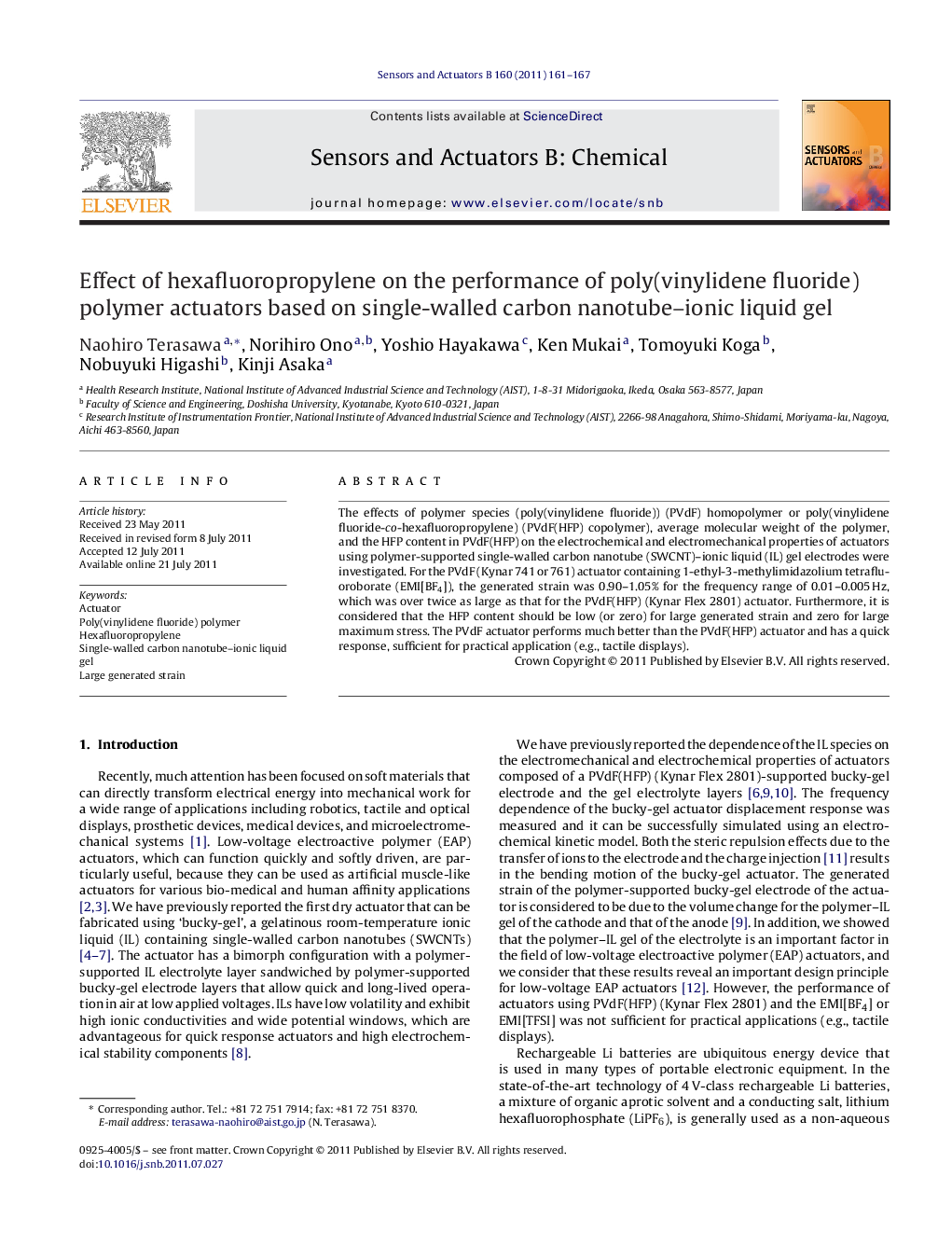| Article ID | Journal | Published Year | Pages | File Type |
|---|---|---|---|---|
| 743951 | Sensors and Actuators B: Chemical | 2011 | 7 Pages |
The effects of polymer species (poly(vinylidene fluoride)) (PVdF) homopolymer or poly(vinylidene fluoride-co-hexafluoropropylene) (PVdF(HFP) copolymer), average molecular weight of the polymer, and the HFP content in PVdF(HFP) on the electrochemical and electromechanical properties of actuators using polymer-supported single-walled carbon nanotube (SWCNT)–ionic liquid (IL) gel electrodes were investigated. For the PVdF (Kynar 741 or 761) actuator containing 1-ethyl-3-methylimidazolium tetrafluoroborate (EMI[BF4]), the generated strain was 0.90–1.05% for the frequency range of 0.01–0.005 Hz, which was over twice as large as that for the PVdF(HFP) (Kynar Flex 2801) actuator. Furthermore, it is considered that the HFP content should be low (or zero) for large generated strain and zero for large maximum stress. The PVdF actuator performs much better than the PVdF(HFP) actuator and has a quick response, sufficient for practical application (e.g., tactile displays).
